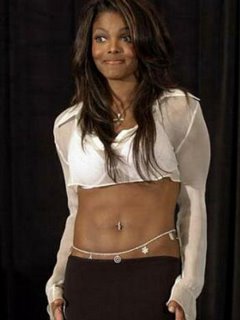
By ALEX VEIGA
AP Business Writer
LOS ANGELES -- Powerhouse tours by the Rolling Stones, U2 and Paul McCartney helped drive concert ticket revenues in North America to a record $3.1 billion in 2005, even as the number of tickets sold declined for the third year in row.
Fans purchased 36.1 million tickets to the top 100 concert tours, compared with 37.6 million in 2004 and 38.7 million in 2003, according to Pollstar, the industry trade magazine.
"You have to figure that's not a healthy sign for the industry overall," said Gary Bongiovanni, Pollstar's editor-in-chief.
Despite a slow first-half of the year and the decline in tickets sold, concert tours in 2005 amounted to a 10.7 percent increase in gross receipts over last year's total of $2.8 billion.
The record revenue was due largely to the rare confluence of superstar artists touring.
"You don't normally see three huge acts like that out touring in the same year," Bongiovanni said. "McCartney and The Stones alone really helped drive up ticket prices."
The average ticket price for the top 100 tours rose to a record $57, compared with $52.39 in 2004, Pollstar said.
The average ticket price has gone up nearly $7 since 2003.
Still, concertgoers proved this year that they remained willing to pay more to see their favorite acts, and the roster of legends that filled touring arenas had little trouble packing them in.
Until this year, the biggest tour of all time had been The Rolling Stones' 1994 outing, which drew $121.2 million in gross receipts, Bongiovanni said.
"Both U2 and The Stones went way beyond that this year," he said.
The Rolling Stones' "A Bigger Bang" tour led all other concert tours in 2005 with $162 million in gross receipts, according to the magazine.
The average Stones ticket was $133.98. The tour sold around 1.2 million tickets.
U2 generated the second most gross receipts, $138.9 million, with an average ticket price of $96.92. The Irish rockers' "Vertigo 2005" tour sold the most tickets, around 1.4 million.
McCartney's tour earned $77.3 million in gross receipts, with the average ticket selling for $135.46. The tour sold around 570,000 tickets.
Other veteran acts who ended the year among the top 20 in sales receipts included the Eagles, Elton John, Neil Diamond, Bruce Springsteen, Tom Petty & the Heartbreakers, Motley Crue and Jimmy Buffett.
Green Day, Rascal Flatts, Dave Matthews Band, Toby Keith, Kenny Chesney, Coldplay, Gwen Stefani and the Anger Management Tour were among the contemporary acts to break into the top 20 biggest earners.
Celine Dion and Barry Manilow, who performed mostly in Las Vegas, also were top draws in 2005. The Canadian diva's shows pulled in $81.3 million in total gross receipts, the third highest. Manilow's shows drew $22.7 million in gross receipts.
"The baby boomers really continue to support and fuel the concert business," Bongiovanni said.


